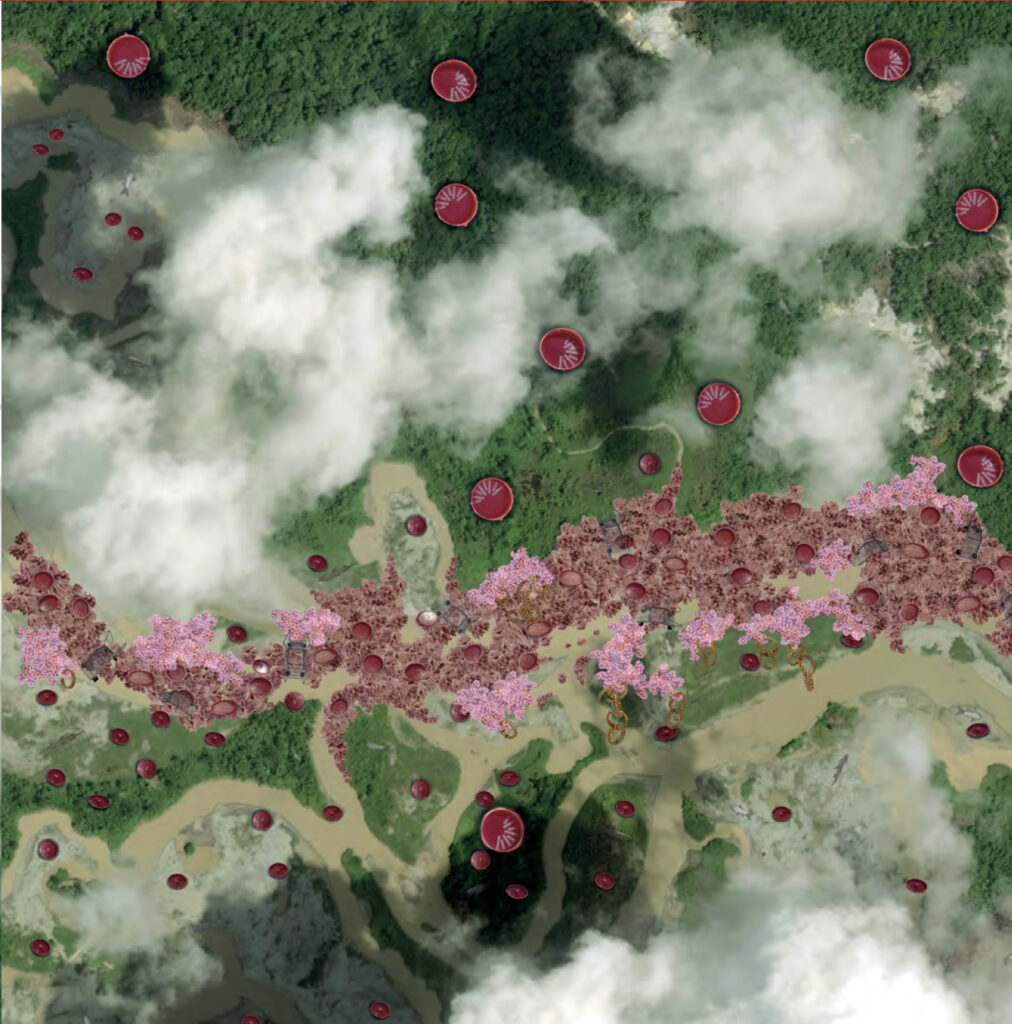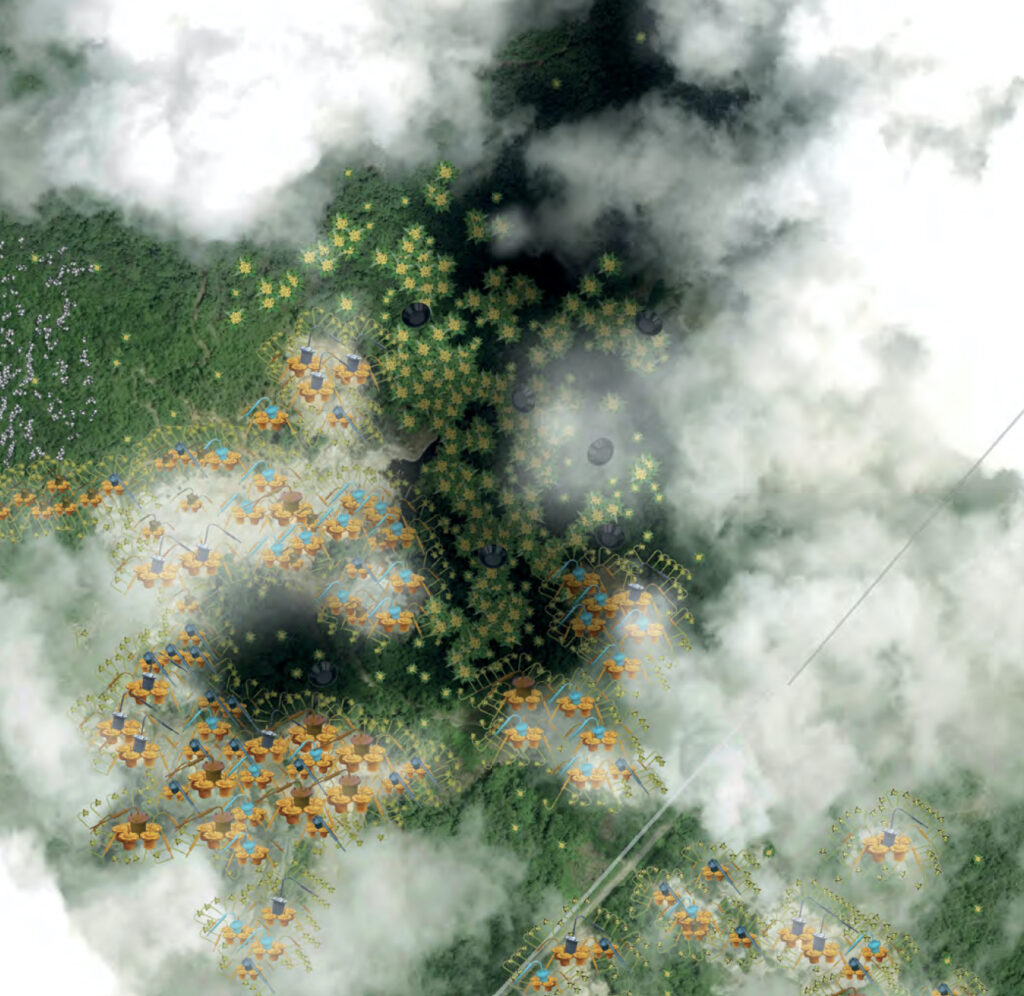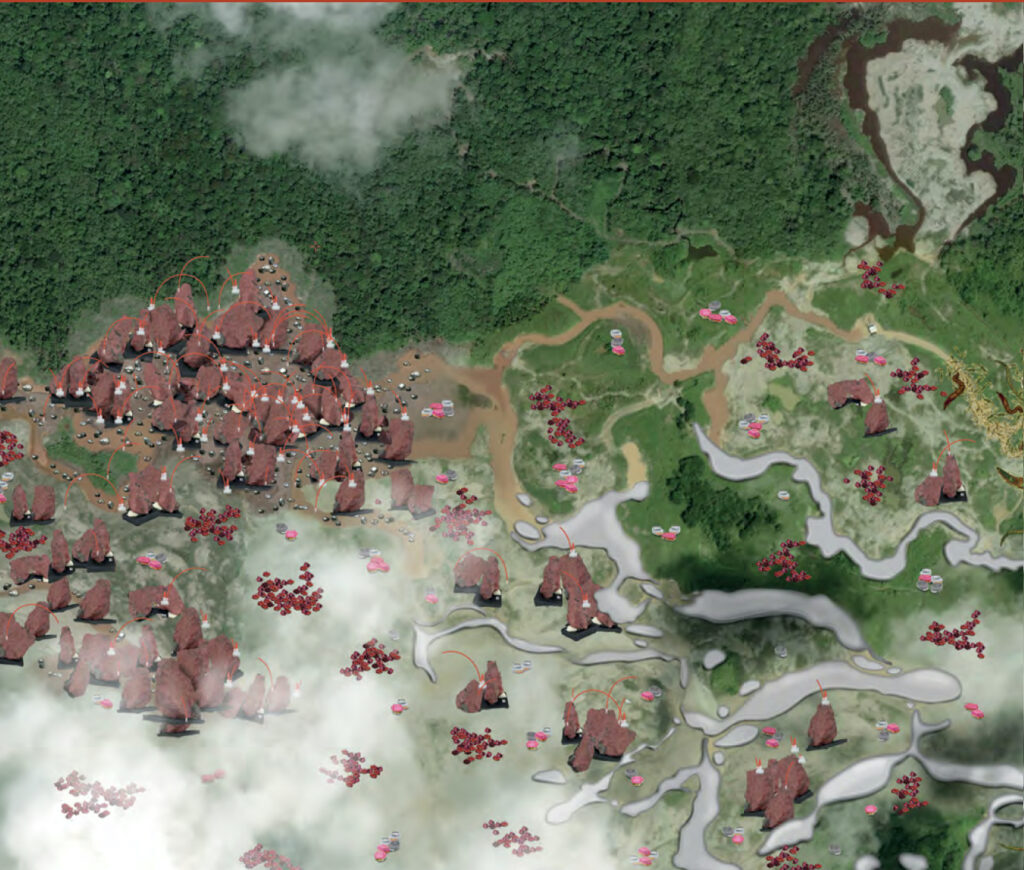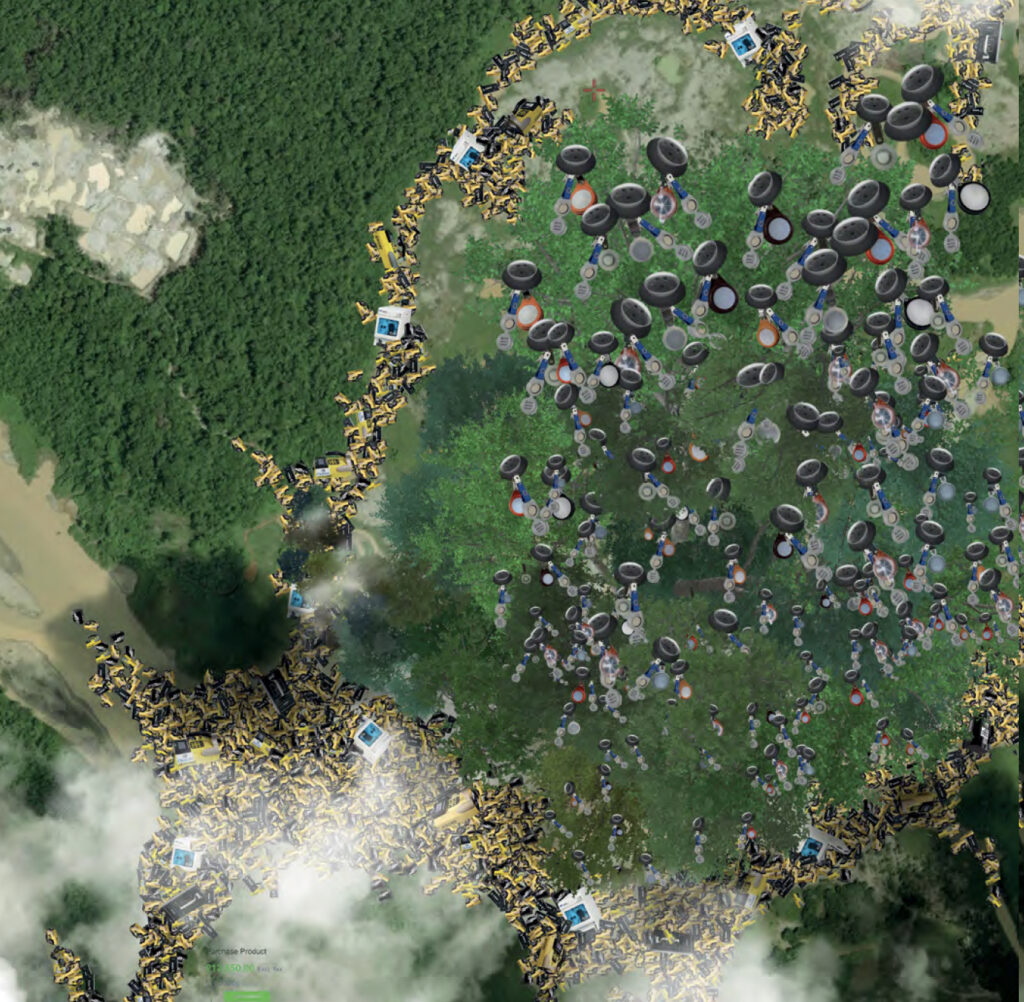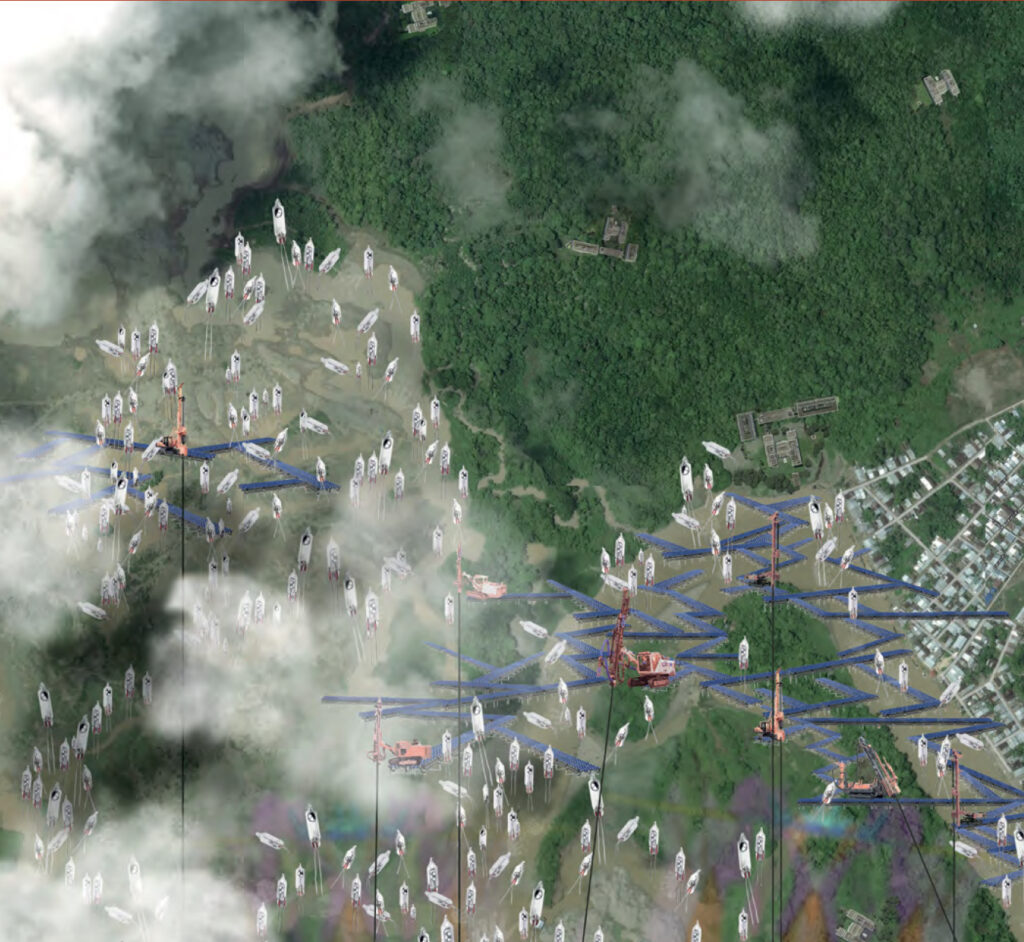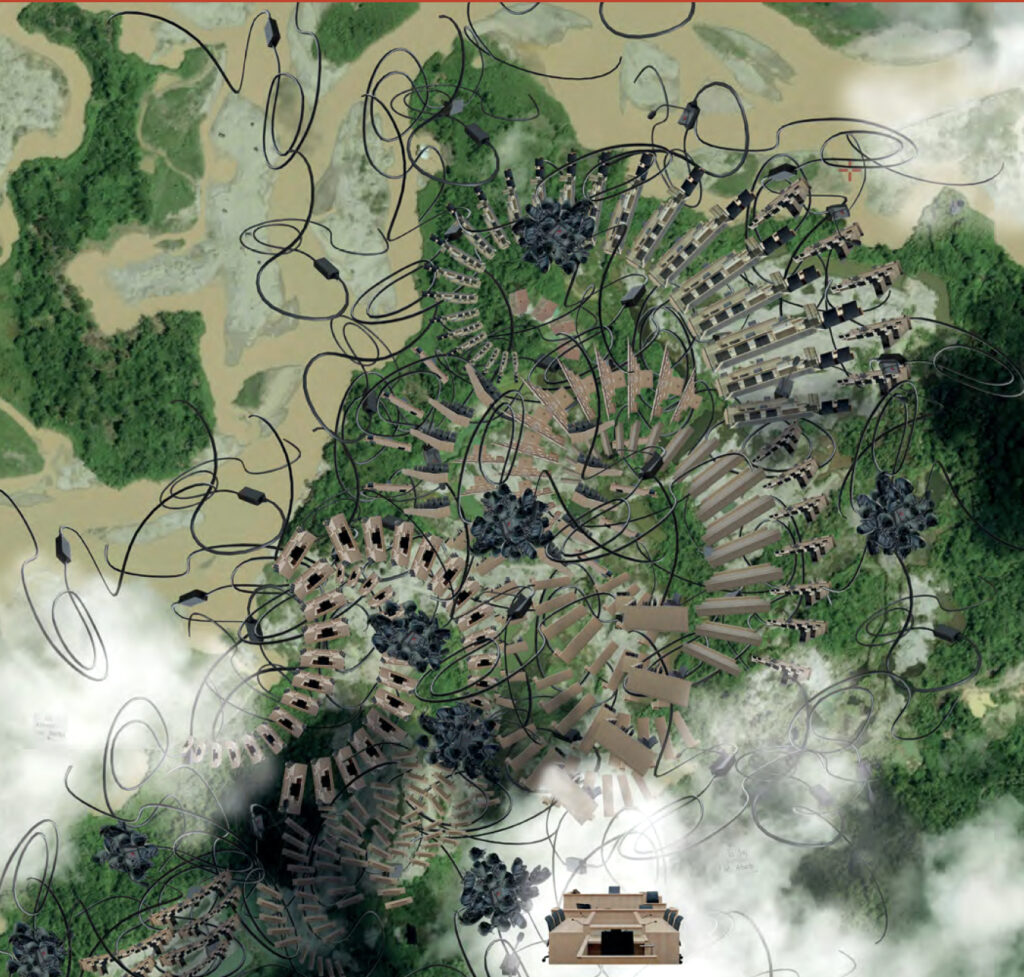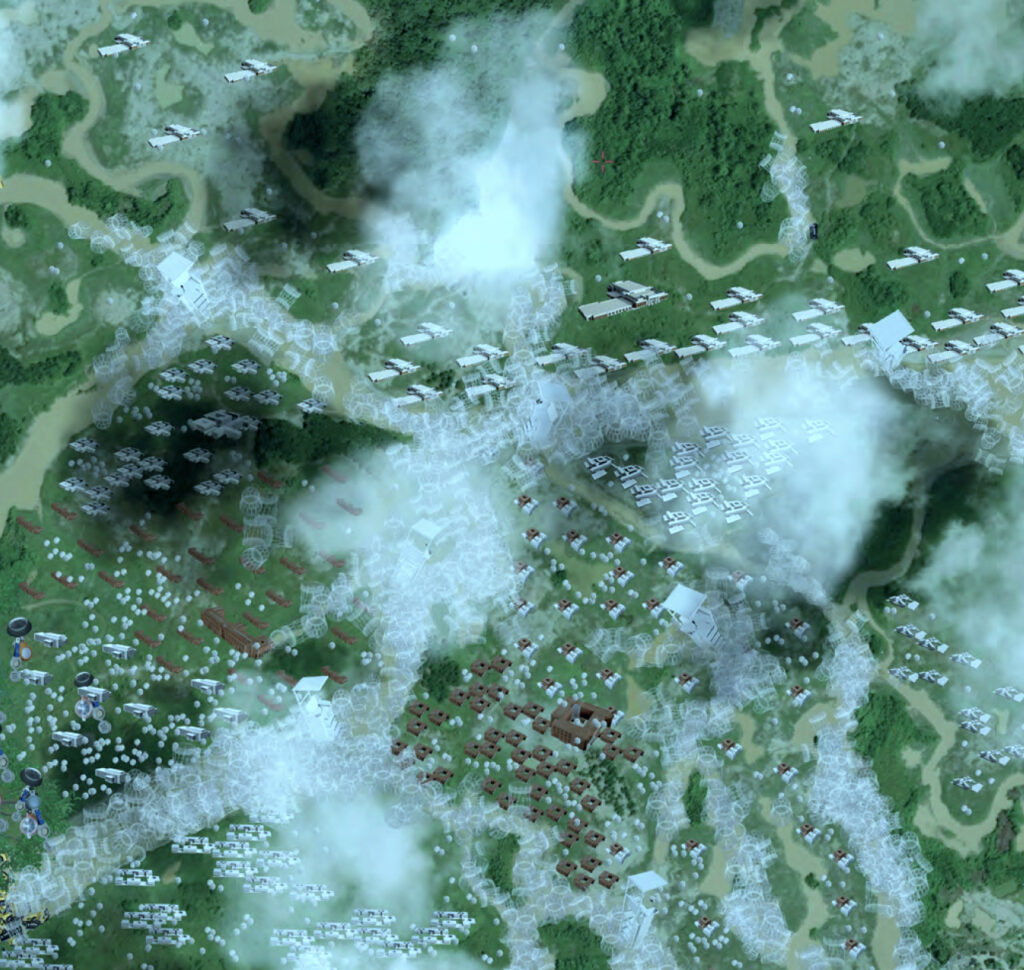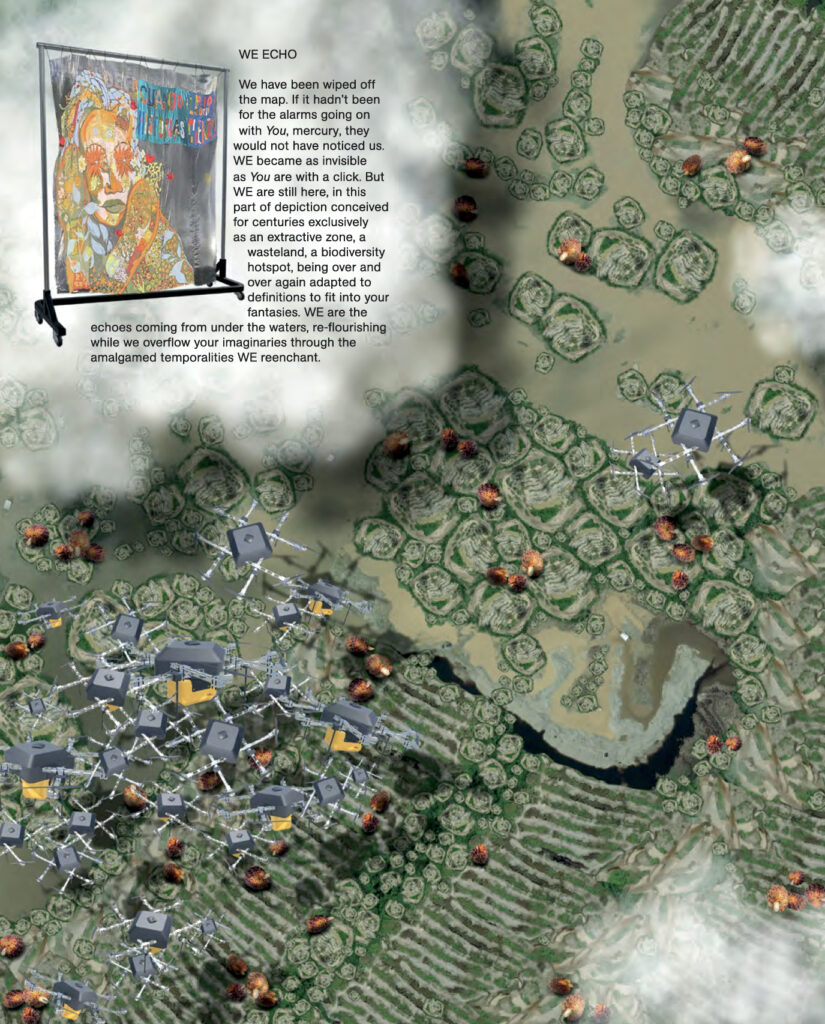a critical cartography of remote sensing
Mercurybody : Contamination of Female Body and sexual Reproduction
Elements: 3D models of a female breast, of sewage treatment plants, of a temporary metal bridge, of human bronchial tubes,
of gold jewelry, of the fish Bocachico in the Atrato River, Gold Mercury Amalgams, Dental Amalgams
voice: we toxic bodies
Finding You Mercury in the mammary glands,
massive deficits in the neurons of children –
Mercury, what does contamination mean?
Is it a question of a political perspective?
Do we have to proof the harmful intention of our contaminator?
This is toxic. Who knows!
But I’m on the edge, don’t push me
“Show me love, show me now“ (Little Simz)
What would it mean to look with remote sensing technologies like satellite images at a section of the Rio Quito in Chocó, Afro-Colombia, a mercury contaminated area of illegal gold mining, to reveal what they cannot depict? Would it be possible to undertake a kind of contamination of the cartography through aesthetic ornamentation, a reverse forensic, as it were? What does it mean to offer the technologically unconscious of the remote sensing a space within a work such as this one?
Mercurybody: Amalgamation and De-Amalgamation
Elements: Various models of retorts, Leaves of the West Indian Elm separating gold particles from rocks,
3D model of a gold panning Batea, Gold Mercury Amalgams
voice: we amalgating bodies
We get rubbed in the hands of miners,
condensing in gold traders’ retorts,
diffusing into skies
Statistics upon statistics to locate us!
Of which planetary amalgam are we part of?
Mercurybody: Bacteriology, Biomagnification, Organic Detecting, Phytoremediation
Elements: Bacteria that process methylmercury, * C. Elegance, model worm testing mercury poisoning,
Foam, Poporo Quimbaya, Medical pipette
voice: we detecting bodies
we biochemical processes, we bacteria
we decompose You
furs, feathers, muscles, leaves, brains, Blood
Oh, what a matrix!
But You Mercury accumulate everywhere!
In shyness, in apathy, in isolation, in delirium, in tremor,
How to detect You?
Mercurybody : Mineralogy, Metallurgy, Crystallization
Elements: Museal Cinnabar Quartz, Cinnabar Crystal, Cinnabarite, Cables of measuring instruments,
Dust mask insert for filtering gaseous mercury, Mercury flows
voice: we crystallizing bodies
Eco-toxology – we are the alchemists of metallurgy
having declared You Mercury
to be the substance
for re-inventing life.
Floating as gas, longing as crystals, revolting as water
Mercurybody: Economies of Compensation
Elements: illustration of a mercury-absorbing granulate, *Images of spallation neutron source: protons hit a target of liquid mercury,
Visual elements of the Minamata Convention, 3D models of energy-saving lamps and SIM card holders for smartphones
voice: we compensating bodies
The Minamata Convention is banning You Mercury!
Is it expressing altruism?
What about Supply chain laws? the Swiss corporate responsibility initiative?
Aren ‘t we collectively committed to cosmopolitan progress?
What about that: From colonial modernism to colonial molecularism!
Here we are: Elementary Particle Physics!
Proton targeting with 18 tons of Mercury
to detect 6 or 7 neutrino particles
Can science provide us Fake Gods?
Mercurybody : Technologies of Contamination Detection
Elements: Illustration of a mercury sensor for urban space. Models of tropical trees,
Images of “Inorganic Mercury Passive Sampler” in laboratories and factories,
Illustrations of mobile mercury analyzers, of analyzers for laboratories
voice: we databodies
An armada of measuring sensors
in search of unwanted concentrations –
Yobibytes of data, who owns them?
Everybody in power will calculate his own Mercury reality!
One that will fit any remote sensation.
Mercurybody : Necropolitics and automated extraction
Elements: Illustrations of various models of mercury circuits, 3D model of a portable assembly line, of various “Exploration Drillers”,
Google map view of Glencore Headquarters Baar/Switzerland, 3D model of a biometric scanner system for finger and palm prints,
Diagram of an underground exploration for gold deposits in the Amazon region
voice: we judging and rating bodies
We Automatic Extractors declaring local activists as terrorists:
They will no longer have the right to address the law.
But those „beggars in a golden pew“ will not be mute!
Stay alert, Necropolitical Monsters!
Mercurybody: New legal Instruments and Philantropic Healing
Elements: 3D models of architecture award-winning courts of law, of a tennis umpire’s chair, of standard trees,
of Phytoplankton (skelotonema costatum), Architectural photographs of standardized interior furnishings for courtrooms,
3D models of conference microphones, of cables, of a wood-eating insect
voice: new legal bodies?
Who grants biocultural rights to rivers and animals?
Can you transform anthropocentric rights?
Who will speak in the cosmopolitical courts?
Does your body have right to remain silent?
Mercurybody, do not wipe out all other forms of knowledge
Mercurybody 9; Forms of Solidarity
Elements: Banner from #SOSColombia in Berlin, May 2021, 3D models of Amazon Delivery Drone,
Satellite images of Rio Quito, digital images of palm fruits
voice: we echoes of bodies
We have been again wiped off the map with a click
becoming as invisible as You are Mercury
But we are still here, in this part of the picture
conceived for centuries exclusively as an extractive zone, a wasteland, a biodiversity hot-spot
Over and over again adapted to definitions to fit into your fantasies.
We are the echoes!
Coming from the under waters, flourishing while we overflow your imaginaries
amalgamed temporalities –we re-enchant You, Mercury!
Remote Sensations (mercurybodies)
a critical cartography of remote sensing
Exhibition: Gold- Mining the Unconciousness, Helmhaus Zurich, 11 February–10 April 2022
knowbotiq with Pablo Torres, Sally Schoenfeldt
supported by Fundación Mareia, Quibdó, Pro Helvetia, Ministry of Culture, Austria
commissioned by Fundación Más Arte Más Acción, Bogotá
Published in: Culturescapes 21 – Amazonia, Anthology as Cosmology, ed. by Katerina Botanova and Quinn Latimer, Sternberg Press, 2021
In the long-term project Atrato Studies: Mercurybodies, a group of participants from Colombia, Portugal, and Switzerland attempt to enter into negotiations about their shared translocal relationships and interdependent entanglements. The group reflects on the aesthetic conditions in which a being-with, a holding of mutual responsibility in time and space, is possible. The subject of these investigations is the Atrato River in the Afro- Colombian Chocó region. The river environment, highly contaminated with mercury and cyanide stemming from ongoing illegal gold mining, has been protected by the Colombian constitution since 2016, which grants it biocultural rights to the “protection, conservation, maintenance, and restoration” of all forms of life and knowledge. How do the political and aesthetic efficacies and resonances of the contaminating mercury change within this new legal constellation?
While the project Atrato Studies: Mercurybodies explores this through encounters of human and non-human actors in translocal fictional settings and assemblages, here, with “Remote Sensations,” knowbotiq attempts to approach the imaginaries and biases of the still Eurocentric West that continue to affect such encounters and assemblages with planetary ambitions. Privileged as we are to enter into such urgent imaginings and encounters as artists from Switzerland, we become part of the translocal relations that have formed and are forming along the Atrato River in the rainforest. In the luggage of our imageries, we find the European history of coloniality, linear psychotropic desires for gold, transgressive values of humanistic education, and violent philanthropic effects. Swiss supply chains and logistics have transported mercury for artisanal gold mining to Colombia for decades, and they have contributed to a massive contamination of the rainforest. At the same time, the Swiss government, in a reciprocal action, brought the Minamata Convention banning mercury mining and trade to the UN for ratification.
In the project “Remote Sensations” we are not, however, primarily concerned with the grand imaginaries and iconic representations of guilt and geopolitical violence: Climate political interventions like REDD+ identifies the protection of rainforests, such as Amazonia, as financially attractive, and the UN calculates the ban on mercury production and export into the countries which are suffering under the Artisanal and Small-scale Gold Mining (ASGM) to force simultaneously the Neo-extractive economy. While the WHO models Colombia’s GDP losses by an urban health deficit caused by the resurgence of malaria in areas of illegal gold mining the Global Alliance for the Rights of Nature (GARN), meanwhile, organized a Tribunal for the Rights of Nature and is convinced that the devastation of the Amazonian rainforest can now be negotiated. In many fields of science and politics, a techno-ecological mentality has been established that approaches complex mental, social, and environmental events from a technological distance, through remote sensing, for example, and is often characterized by vertical thinking far from empathy.
We are more driven by the interdependent, mostly invisible, aesthetic, and epistemic molecular assemblages of mercury outlined above. What seems necessary is to place the focus on alloys, amalgamations, diffusions, and accumulations of materialities, affects, emotions and techno-ecological sensations. These are molecular events that are continuously and immensely reactive, reproductive and mutating, moving across and beyond the forms of the subjective towards body knowledge and the technologically unconscious. Mercury is constantly ready to jump into other compounds. It dynamically changes its molecular forms, binds metallic particles, or accumulates in organic matter. Wherever it appears, it creates sudden events in voluntary or involuntary interaction and creates assemblages, which we call mercurybodies. These bodies are unstable and release energies for desires and enrichments, injuries, healings and their social-political imaginations.
In this project we try to negotiate with these invisible molecular events from the dis- and assembling “points of view” of metallurgical, amalgamating, and diffusing processes. Central for us are the translocal chains of the agency of mercury in its liquid, gaseous, solid, and immaterial forms, and their visual representations in political, economic, and scientific digital platforms. We thus outline with “Remote Sensations” a contribution to a concept of a critical cartography and question the abstracting ubiquity of maps, models, diagrams and statistics, all of which are digitally available to “everyone” as high-resolution “material.”
molecular: The current forms of creation of value through the extraction of matter, knowledge and desires, are increasingly characterized by the division of bodies, materials and territories into micro- and nanostructures and their translation into molecules and data. “Molecules “stand here, in knowbotiqs understanding, for the missing imaginations and representations of these fragmentations, dispersions and abstractions of bodies, materials and affects in the ecologies of deep molecular access.
the river as a legal subject: Sentence T622 of the Colombian Constitutional Court, issued in 2016, acknowledges that there have been serious violations, of these communities’ rights to life, health, water, a healthy environment, culture, and territory, chargeable to Colombian state institutions and exacerbated by illegal mining.
cosmos: the cosmos of Isabel Stengers intervenes as a way of slowing down, of resisting the idea that it must matter for everybody that a correct position be reached, which should be accepted by all those concerned. It rather demands that all concerned parties be present in the mode that makes the decision concrete, that is, as difficult as possible, precluding any shortcut or over-simplification, any a priori differentiation between that which counts and that which does not. Nobody shall be forced in a collective decision-making process, the refusal of it shall be an important possible part of a process too, a process which dares not to dream in grand utopian ways, but to maintain.
It dares not to innovate, to improve or develop, but to repair. Not to discover but to recuperate. To put a limit to growth and start to care.
artisanal mining: The Akan people of southern Ghana, Ivory Coast, and part of Togo have been known as experts in gold extraction, being one of the motives by which they were abducted, justifying the slave trafficking from 1640-1700 in accordance with anthropological records (Arocha et. al. 2007) and taken, together with other Ashanti, Yoruba, Ewe, Fon, Kongo, Mandinka, Carabalí, and Ngola peoples, to the mines of Tadó, Juradó-Chocó, Timbiquí-Cauca, Barbacoas and Iscuandé-Nariño (Sánchez 2010).

